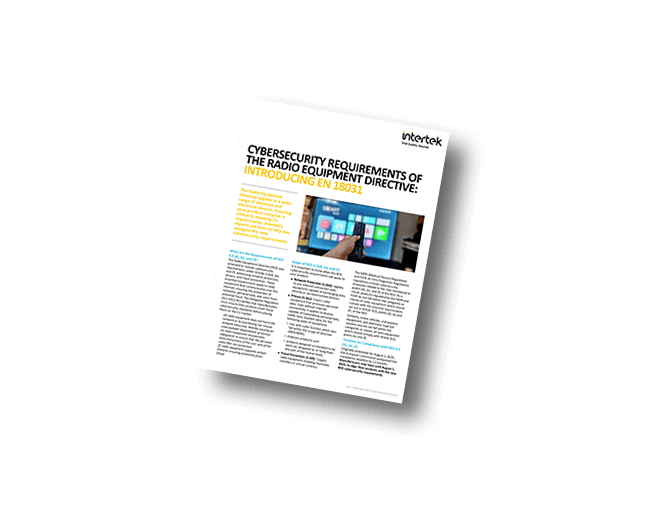RED Directive: The Cybersecurity Compliance Countdown – Part 3

06 May 2025
How EN 18031 Shapes Development of Products that are Secure by Design
EN 18031 isn’t just a standard – it’s a shift in how products are built. Instead of treating cybersecurity as an afterthought, manufacturers must embed security into every stage of product development, from initial concept to decommissioning.
Key Secure-by-Design Principles
A core tenet of EN 18031 is network protection. Devices must be designed to resist attacks that could disrupt their functionality. This means implementing safeguards like encrypted communication channels and anomaly detection systems to thwart cyber threats before they escalate.
Another pillar is privacy-by-default. User data should be protected from the moment a device is activated. This involves encryption, strict access controls, and clear user consent mechanisms – no more relying on default credentials that hackers can easily exploit.
For devices that handle sensitive financial transactions, fraud prevention mechanisms like multi-factor authentication (MFA) are non-negotiable. This is especially critical in industries like smart payments, where security lapses can lead to financial loss and regulatory penalties.
Lifecycle security is also essential. Many cybersecurity breaches occur because manufacturers fail to update their products after launch. EN 18031 encourages long-term support, including firmware updates, security patches, and vulnerability monitoring.
A practical implementation of this framework is zero-trust architecture. By adopting a principle of “never trust, always verify,” manufacturers ensure that access is continuously monitored and authenticated.
Case Study: The Impact of Secure Coding
A European smart appliance manufacturer drastically cut vulnerabilities after adopting standards-based security practices. By integrating unique per device credentials, secure firmware update mechanisms, and automated security checks into their development pipeline, they stopped critical flaws from reaching production – saving costs and bolstering customer trust.
Actionable Checklist
- Conduct peer reviews of security-critical code to identify weaknesses before deployment.
- Use SAST (Static Application Security Testing) tools to detect vulnerabilities early in development.
- Implement automated patching systems to address emerging threats in real time.
- Adopt a secure software development lifecycle (SDLC) methodology to ensure security is integrated throughout the entire product lifecycle.
Final Thought
Secure-by-design is no longer optional – it’s the expectation in today’s regulatory landscape.

